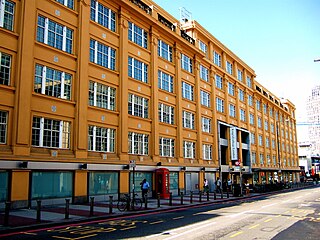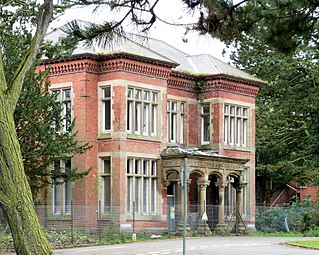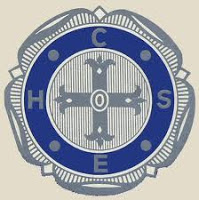
The Royal College of Nursing (RCN) is a registered trade union in the United Kingdom for those in the profession of nursing. It was founded in 1916, receiving its royal charter in 1928. Queen Elizabeth II is the patron. The majority of members are registered nurses; however student nurses and healthcare assistants are also members. There is also a category of membership, at a reduced cost, for retired people.
The National and Local Government Officers' Association was a British trade union representing mostly local government "white collar" workers. It was formed in 1905 as the National Association of Local Government Officers, and changed its full name in 1952 while retaining its widely used acronym, NALGO. By the late 1970s it was the largest British white collar trade union, with over 700,000 members. It was one of three unions which combined to form UNISON in 1993.

The Florence Nightingale Faculty of Nursing, Midwifery & Palliative Care is an academic faculty within King's College London. The faculty is the world's first nursing school to be continuously connected to a fully serving hospital and medical school. Established on 9 July 1860 by Florence Nightingale, the founder of modern nursing, it was a model for many similar training schools through the UK, Commonwealth and other countries for the latter half of the 19th century. It is primarily concerned with the education of people to become nurses and midwives. It also carries out nursing research, continuing professional development and postgraduate programmes. The Faculty forms part of the Waterloo campus on the South Bank of the River Thames and is now one of the largest faculties in the university.

The Voluntary Aid Detachment (VAD) was a voluntary unit of civilians providing nursing care for military personnel in the United Kingdom and various other countries in the British Empire. The most important periods of operation for these units were during World War I and World War II. Although VADs were intimately bound up in the war effort, they were not military nurses, as they were not under the control of the military, unlike the Queen Alexandra's Royal Army Nursing Corps, the Princess Mary's Royal Air Force Nursing Service, and the Queen Alexandra's Royal Naval Nursing Service. The VAD nurses worked in field hospitals, i.e., close to the battlefield, and in longer-term places of recuperation back in Britain.

The name National Health Service (NHS) is used to refer to the free public health services of England, Scotland and Wales, individually or collectively. Northern Ireland is known as 'Health and Social Care' to promote its dual integration of health and social services.

The Modern Records Centre (MRC) is the specialist archive service of the University of Warwick in Coventry, England, located adjacent to the Central Campus Library. It was established in October 1973 and holds the world's largest archive collection on British industrial relations, as well as archives relating to many other aspects of British social, political and economic history.
The Mental Hospital and Institutional Workers' Union was a trade union in the United Kingdom.

Whittingham Hospital was a psychiatric hospital in the parish of Whittingham, near Preston, Lancashire, England. The hospital opened in 1873 as the Fourth Lancashire County Asylum and grew to be the largest mental hospital in Britain, and pioneered the use of electroencephalograms (EEGs). It closed in 1995.
The British Association of Social Workers (BASW) is the largest professional association of registered social workers and qualified care managers in the United Kingdom. The association has a members' code of ethics that outlines best social work practice and works to support social workers and care managers through education and resources. Headquartered in Birmingham, BASW has regional offices in England (Birmingham), Northern Ireland (Belfast), Scotland (Edinburgh), Wales (Cardiff), and North Wales.
The Metropolitan Poor Act 1867 was an Act of Parliament of the United Kingdom, the first in a series of major reforms that led to the gradual separation of the Poor Law's medical functions from its poor relief functions. It also led to the creation of a separate administrative authority the Metropolitan Asylums Board.

The Confederation of Health Service Employees (COHSE) was a United Kingdom trade union representing workers primarily in the National Health Service.
During World War II, a centralised state-run Emergency Hospital Service was established in the United Kingdom. It employed doctors and nurses to care for those injured by enemy action and arrange for their treatment across the range of local and charity hospitals that existed at that time. It was also known as the Emergency Medical Service, although this was, strictly speaking, the medical staff of the service.
The history of nursing in the United Kingdom relates to the development of the profession since the 1850s. The history of nursing itself dates back to ancient history, when the sick were cared for in temples and places of worship. In the early Christian era, nursing in the United Kingdom was undertaken by certain women in the Christian Church, their services being extended to patients in their homes. These women had no real training by today's standards, but experience taught them valuable skills, especially in the use of herbs and folk drugs, and some gained fame as the physicians of their era. Remnants of the religious nature of nurses remains in Britain today, especially with the retention of the job title "Sister" for a senior female nurse.
Susan Villiers (1863–1945) was an English nurse who specialised in caring for patients with infectious diseases in fever hospitals, also known as isolation hospitals. She was a leading figure in the drive for better nursing education and a better-organised nursing profession, especially for fever nurses. As well as being matron of various fever hospitals, she was on the council of the Fever Nurses Association from its beginning in 1908, and she played important roles in various other organisations working towards registration of qualified nurses, better training and other improvements for the profession.
The Royal British Nurses' Association was founded in December 1887 by Ethel Bedford-Fenwick.
Voluntary hospitals were created from the eighteenth century in the United Kingdom. In America, Ireland, and Australia, voluntary hospitals were established later. They can be distinguished from municipal hospitals, which were publicly owned, and private hospitals, which were run commercially. They were initially financed by public subscription. A voluntary hospital may also be a charitable hospital.
The Workhouse Infirmary Nursing Association was created in 1879 to organise training and act as an employment agency for nurses in Poor law infirmaries and workhouses.
Workhouse infirmaries were established in the nineteenth century in England. They developed from the Workhouse and were run under the Poor law regime.
Muriel Conomie Stanley, also known as Sister Stanley, was an Indigenous Australian Anglican home missionary, obstetric nurse and social worker. Before earning her nursing degree, she served as the matron of a Church Army children's home in Tasmania. She became an obstetric nurse in 1945, making her one of the first Aboriginal Australians to become a registered midwife. She then served as matron of the Yarrabah mission hospital. She held this role from 1945 to until 1959. Leaving the mission, she moved to London for a training course in moral welfare. She returned to Australia and became a social worker for the Anglican Church in Australia, working in Aboriginal Australian communities in Queensland.







